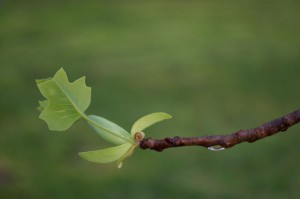Traditional Chinese Medicine Attributions of Spring
 Seasons change, people change. Spring brings things new and it renews vitality to the old. Since ancient times we have been observing and studying the effects of seasonal and environmental changes on human kind’s growth and development. Spring is unique in the way of awakening lifeforms of many shapes and sizes from the long hibernation of winter. The transformation is beautiful as it physically changes from a cold, frozen dormancy, to a warm, vivid birthing place. The arrival of spring is an annually blessed event of life from which everyone benefits and is changed.
Seasons change, people change. Spring brings things new and it renews vitality to the old. Since ancient times we have been observing and studying the effects of seasonal and environmental changes on human kind’s growth and development. Spring is unique in the way of awakening lifeforms of many shapes and sizes from the long hibernation of winter. The transformation is beautiful as it physically changes from a cold, frozen dormancy, to a warm, vivid birthing place. The arrival of spring is an annually blessed event of life from which everyone benefits and is changed.
In Traditional Chinese Medicine (TCM) each of the seasons are represented by an element. Each season/element is related to our emotional state, senses, life quality, and organ systems just to name a few. Here is an overview of what this means.
Traditional Chinese Medicine Attributions of Spring
Element – Wood
Wood represents limbs, joints, spine, roots, trunk, etc. These are the growing structures of an organism. In a way, wood represents life, new growth and birth of ideas.
Color – Green
Green is clearly seen in springtime with trees awakening from their winter slumber and sprouting new leaves, grass returning to carpet our yards and the roadside.
Direction – East
Each day originates in the east. In the springtime it is normal to rise with more energy in the mornings.
Sense/Organ – Eye/Sight
Eyes may become irritated in the spring, becoming watery from allergens that are stirred in the air by wind. The vision, of course, can be impacted by this condition.
Fluid – Tears
This is telling of an eye irritation, such as allergic reaction, and fits with the sense/organ associated with spring.
Indicator – Nails
Nails can be an indicator of health in spring. It is very interesting that the nails can also be an indicator of the health of one’s liver. Between the eyes, skin and nails, we should be able to see if there are any obvious problems in the liver.
Tissue – Ligaments, Tendons and Muscles
The tissues that connect our bones to bones, and our muscles to bones, are the ligaments and tendons. These structures give us our flexibility and balance. Poor balance, poor flexibility, and muscle fatigue are indications that these tissues are unhealthy. Because of the many functions our liver carries out, it is possible that ailing from any of these problems can indicate a liver problem. Work on proper strength training, proper stretching, and proper body mechanics of daily activities if you detect problems with your connective tissues. Massage can also be beneficial.
Yin Organ – Liver
This is the largest internal organ. It has so many functions that I cannot name them all here. It is important in metabolism of fats, carbs and proteins, aids in blood sugar levels, sends toxins to the kidneys for filtration, helps with clotting qualities of blood cells, and stores minerals. Most commonly, in liver problems, indicators are in the skin, eyes, and mucus, which will tend to have a yellowish-greenish tint.
Yang Organ – Gall Bladder
This is an emulsification aiding organ that works closely with the liver.
Smell – Rancid
This can be reminiscent of an odor you might expect from an oil that has expired. If this is an odor you smell on yourself or someone you know, it might be an indication there is a gallbladder or liver problem.
Taste – Sour
It is said in TCM that the spring is when the liver craves sour.
Sound – Shout
Springtime shouting may be something you feel the need to do for some release. Holding it in would not be good for you in the long run. Likewise, if you notice someone expressing the need to shout this spring, try remembering it is not personal. Do not let it anger you or penetrate your heart.
Emotion – Anger
The most important thing to remember is that letting anger out in a healthy way that will not be harmful to yourself or others is the key. Do not hold your emotions inside. Anger can be released in healthy ways, and if you need some ideas just let me know. We can go over some to see what will work best for you.
Climate – Wind
The wind is how new air comes to us, refreshing us and clearing out old stagnate air.
Quality – Growth
The quality of spring is not just growth of woody organisms, fleshy organisms, or single celled organisms, but also the growth of creativity. Growth is a beautiful quality in its many forms.
Now that you’re familiarized with a few of the TCM associations surrounding spring, I hope you will continue to listen to your body’s cues. We will experience changes throughout the season leading through to the beginning of summer. At that time, we will continue changing in preparation for what is to come in the summer. This cycle continues throughout the year and should not be ignored in any of its phases.
I can follow up with some more posts throughout the month on my website that will help give some insight into what the body needs in the spring. Additionally, I will try sharing some ways of relaxing and destressing, as April is National Stress Awareness Month.

You must be logged in to post a comment.